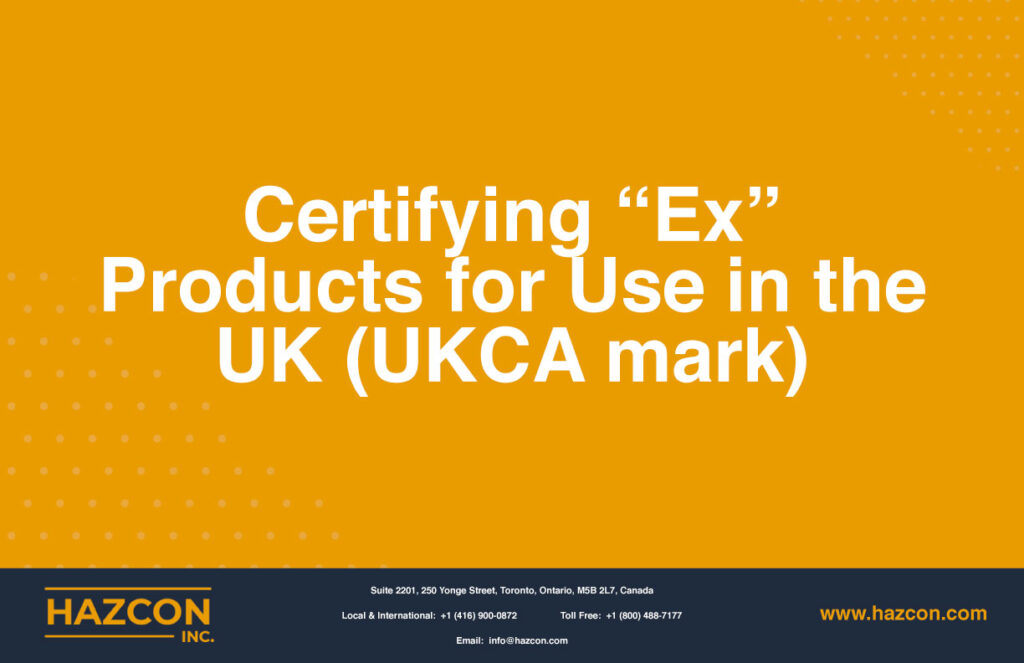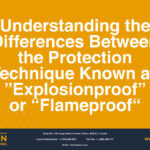
Certifying “Ex” Products for Use in the UK (UKCA mark)
What was the impact of Brexit on electrical product markings in the UK?
Because the UK recently left the European Union (“Brexit”), a new marking was created for UK goods that previously were subject to the CE marking system. The UKCA, meaning UK Conformity Assessed, was created for goods being put into the UK market. This marking and its Regulations will replace the CE marking for the UK (England, Wales, and Scotland). For products placed on the market in Europe, the EU continues to require that they be marked CE. This CE requirement includes Northern Ireland. The UKCA marking is not accepted for products placed on the European or Northern Ireland markets.
What are the timelines for the introduction of the UKCA?
The UKCA marking became available as of January 1, 2021. Given the proper assessment, new products for the UK marketplace will be required to mark their products with UKCA marking. To ease the transition, most products that previously met EU requirements and were already given a CE marking may still place their CE marked products onto the UK marketplace until January 1, 2022. Such CE marking must have been issued from an EU Notified Body. The duration of this transition period is strictly defined. After January 1, 2022, products placed in the UK marketplace must be UKCA-approved.
Are the CE and UKCA markings based on similar requirements?
At the present, the assessment and certification requirements for both CE and UKCA are similar. Existing quality data and documentation for CE marking may form the basis for UKCA certification. Some amendments may be required. In both cases, the relevant legislation must be strictly adhered to.
Who may provide the UKCA mark?
Only UK Approved Bodies situated in the UK may conduct the required assessments and provide the UKCA certification. In other words, UKCA assessment and certification must be conducted by a UK Approved Body located in the UK. Note the physical presence requirement of UKCA.
Both UKCA and CE markings may be used simultaneously on products, but only the UKCA marking indicates conformity with relevant UK legislation. For entry into the EU, certification must be conducted by an EU Notified Body.
When should we begin to pursue UKCA marking for existing CE-approved products?
Although you may continue to use your CE markings for products destined for the UK market until January 1, 2022, you are advised to pursue the UKCA marking as soon as possible. Allow yourself lots of time. No existing stock marked CE may be placed in the UK market after that date. A UK Declaration of Conformity must have been achieved for these products before the deadline.
What’s involved in a UK Declaration of Conformity?
As was already noted, the requirements for a UK Declaration of Conformity are similar to the requirements of an EU Declaration of Conformity. Manufacturers are responsible for ensuring that their product conforms with the relevant UK legislation. The UKCA mark, once achieved, may be placed on the product, its packaging, or on product literature, as indicated in the relevant legislation.
Further resources:
Conformity assessment bodies: change of status from 1 January 2021.
https://www.gov.uk/guidance/conformity-assessment-bodies-change-of-status-from-1-january-2021
Using the UKCA mark from 1 January 2021.
https://www.gov.uk/guidance/using-the-ukca-mark-from-1-january-2021
Request a Consultation
Complete the form below to get started.






